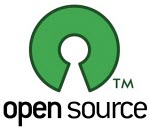 When most people think of Open Source, they think of the big, highly-publicized projects like Linux, Firefox, and OpenOffice.org. But for every high-profile open source project, there are dozens of lesser-known projects. Just pay a visit to SourceForge if you don’t believe me.
When most people think of Open Source, they think of the big, highly-publicized projects like Linux, Firefox, and OpenOffice.org. But for every high-profile open source project, there are dozens of lesser-known projects. Just pay a visit to SourceForge if you don’t believe me.
Simply because certain projects don’t grab the attention that the big names do doesn’t mean that they don’t merit a closer look. In fact, a number deserve far more notice than they get.
Let’s take a look at three open source projects that any webmaster or web developer should keep an eye on. They just might change the way you work.
Piwik
 If you run a website, chances are you track information like the number of visitors that your site gets, how they got to your site, the pages they’ve hit on your site, and the like.
If you run a website, chances are you track information like the number of visitors that your site gets, how they got to your site, the pages they’ve hit on your site, and the like.
And chances are that you use something like Google Analytics or Yahoo! Web Analytics. Piwik offers a solid alternative to both those services.
What does it do?
Piwik collects data about the visits to your site, and stores it in a MySQL database. From there, you can generate detailed reports based on that data. Simple enough, isn’t it?
Two factors make Piwik very attractive. First, it’s installed on your web server and stores information in your MySQL database. The information that Piwik collects belongs to you. On top of that, you can run custom queries on your database to extract the information that you want.
Second, you can extend Piwik with plugins. It comes with over 20 that let you include the code that Piwik needs to collect information about your site. Piwik’s user community has also contributed a number of plugins. If you have the programming chops, you can even write your own.
Why should you keep an eye on it?
With enough interest and support, Piwik has the potential to become a serious rival to Google Analytics or Yahoo! Web Analytics. If nothing else, Piwik returns control of your data to you.
OpenLaszlo
![]() Remember when web development meant building an e-commerce site or a nifty interface? Nowadays, it’s all about building web applications. And that’s where OpenLaszlo comes in.
Remember when web development meant building an e-commerce site or a nifty interface? Nowadays, it’s all about building web applications. And that’s where OpenLaszlo comes in.
What does it do?
It’s a platform for writing, testing, and deploying Rich Internet Applications – a class of web applications that mimic the look, feel, and features of desktop software.
Applications developed in OpenLaszlo are written in a language called LZX, which is a combination of XML and Javascript. If you’re familiar with HTML, Javascript and AJAX development, then LZX will seem familiar.
Once you’ve written your application (and the people behind OpenLaszlo claim that it can be done quickly), you can deploy it to any web server. The whole process is a little more involved than that, but development with OpenLaszlo is fairly straightforward.
Why should you keep an eye on it?
It’s unlikely that cloud computing and web applications will fade away anytime soon. They’ll probably become more popular in the coming years. Using OpenLaszlo, you can quickly prototype or build Rich Internet Applications. And if you’re wondering what it can do, check out Gliffy and Pandora, two web applications written using OpenLaszlo.
Typo3
![]() If there’s one type of application that the open source world isn’t lacking it’s the content management system (CMS). There are tens of them. More than a few people have asked the question do we need another open source CMS? The folks behind Typo3 think so.
If there’s one type of application that the open source world isn’t lacking it’s the content management system (CMS). There are tens of them. More than a few people have asked the question do we need another open source CMS? The folks behind Typo3 think so.
What does it do?
Designed for small and medium-sized businesses, Typo3 helps build and maintain web and intranet sites. While Typo3 doesn’t work or behave much differently than any other CMS, it has several features that set it apart from the pack.
Like what? First off, an integrated rich text editor. Typo3’s developers claim that editing content in the application is very similar to working with a word processor. Next, there are wizards to help you create forms and tables, and to manipulate graphics.
Typo3’s over 3,000 extensions give it more than just a little flexibility. With a few mouse clicks, you can install extensions that add a news reader, a photo gallery, or a web analytics tool into your site.
Why should you keep an eye on it?
It’s easy to use and incredibly flexible. As well, Typo3 is packed with dozens of features that enable you to quickly create and deploy a website. If you’re not a web designer or developer then Typo3 might just be the fastest and easiest way to build your web presence.
Final thoughts
Piwik, OpenLaszlo, and Typo3 aren’t on everyone’s open source radar though they should be. And there are other open source projects out there that deserve more attention that they are getting. If you can think of any others, share them by leaving a comment.
About the author:
Scott Nesbitt is a writer based in Toronto, Canada who spends most of his day writing technical and marketing documents. In his less-than-copious spare time Scott also writes articles, essays, and reviews for a variety of print and online publications.



























